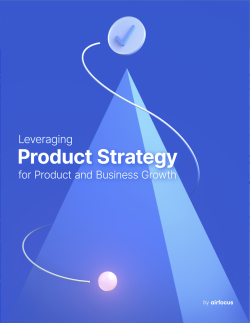Boston Consulting Group (BCG) Growth-Share Matrix
What is the Boston Consulting Group growth-share matrix?
The Boston Consulting Group growth-share matrix definition
The BCG growth-share matrix is a widely used tool developed by the Boston Consulting Group to help guide prioritization efforts. It’s a business-first tool that prioritizes items based on the profitability they present to the business.
The growth-share matrix was developed collaboratively with BCG’s Alan Zakon, who later became the firm’s CEO. It’s a simple tool originally sketched by Zakon, then refined through conversations with colleges.
BCG founder Bruce Henderson popularized the concept in his 1970 essay “The Product Portfolio.” At its peak, the growth-share matrix was utilized by approximately 50% of Fortune 500 companies, and it remains a core component of business strategy teachings in business schools today.
What are the components of the BCG matrix? and what do they represent?
The BCG growth-share matrix is made up of four quadrants that also have representative symbols: cash cow, star, question mark, and dog (or pet). Here are the four quadrants:
Low growth, high share - Cash cows: Products in low growth areas where the company has a high market share and should be milked for as much money as possible.
High growth, high share - Stars: Products in high growth markets with a high market share that can generate high income but also burn through a lot of cash for a company.
High growth, low share - Question marks: Products in high growth markets where the company doesn't have a large market share and may not be worth maintaining.
Low share, low growth - Dogs (or pets): Products in low growth markets where the company has a low market share and shouldn't be maintained because they don't generate much money or have much potential, and often end up being cash traps.
How can product managers use the BCG matrix?
Product managers can use the BCG matrix to analyze their projects and determine the appropriate strategy for each product.
The BCG matrix provides a data-driven approach to product portfolio management and offers insights to make informed decisions. Product managers can use the BCG matrix to make portfolio management decisions, like building, maintaining, reaping, or abandoning a product.
It also provides insights to gain buy-in from stakeholders, make decisions based on data, find competitive advantages, and define marketing strategies. Building a product optimizes or launches it to drive market share, maintaining a product maintains profits, reaping a product improves cash flow, and abandoning a product reduces costs and opens investment opportunities.
You can also use the matrix to evaluate products at multiple points during development to ensure you’re still building value into the project even as requirements change.
Benefits and disadvantages of using the BCG matrix
The Boston Consulting Group growth-share matrix is an interesting tool for product management. Unlike most agile and lean tools, it focuses on business value rather than value to the user. This brings a unique set of benefits and disadvantages to those using the BCG matrix for product management.
Benefits
Helps managers evaluate the balance of products in their portfolio
Great for large companies
Easy to understand and use
Can help ensure early market share leadership
Disadvantages
Not a holistic method
It’s trying to measure something that can be unpredictable (sometimes “dogs” can earn more money than “cash cows”)
Limited scope (it only measures two dimensions)
There's no clear definition of “market”
Alternatives to the BCG matrix
Here are alternatives you can use if the BCG matrix doesn’t quite work for you.
Porter's five forces model - Helps businesses guide prioritization by analyzing their standing in the market.
Ansoff matrix - A two by two grid of four strategies that help guide growth and identify risks.
Value chain analysis - Assess how each step in your value chain adds or detracts value from the final product.
MARACA Framework - A market analysis tool used to help identify new markets that may offer value to the business.
General FAQ

Glossary categories
Create effective product strategy

Experience the new way of doing product management








